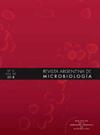母乳中细菌门的组成:分娩方式的影响。
IF 2.1
4区 生物学
Q4 MICROBIOLOGY
引用次数: 0
摘要
母乳被认为是一个有生命的生态系统。母体、环境和新生儿因素影响牛奶细菌组成。本研究的目的是评估与剖宫产相比,阴道分娩的母亲母乳中的门。在这项单中心病例对照研究中,60名妇女参与。其中一半是阴道分娩,另一半是剖宫产。分娩后3个月采集母乳标本进行DNA提取,采用定量实时链聚合酶反应测定厚壁菌门、拟杆菌门、放线菌门和变形菌门。两组的每日卡路里、蛋白质、脂肪、碳水化合物和纤维摄入量没有显著差异。剖宫产乳中拟杆菌门(Bacteroidetes)、厚壁菌门(Firmicutes)和变形菌门(Proteobacteria)的比例显著高于阴道分娩(p=0.03、p=0.02和p=0.042)。同样,厚壁菌门与拟杆菌门之比显著增加(p=0.02)。经阴道分娩的男婴母亲的乳汁中放线菌数量显著高于女婴(p=0.015)。与阴道分娩相比,剖宫产母亲的母乳显示出主要细菌门群的变化。此外,我们的研究结果表明,婴儿性别是影响某些门数量的有效因素。本文章由计算机程序翻译,如有差异,请以英文原文为准。
Composition in phyla from breast milk: Effect of the mode of delivery
Breast milk is considered as a living ecosystem. Maternal, environmental and neonatal factors affect milk bacterial composition. The aim of present study was to assess the phyla from breast milk of mothers with vaginal delivery compared to the cesarean section. In this single-center case–control study, sixty women were participated. Half of them had vaginal delivery and others experienced cesarean section. The breast milk samples were collected three months after delivery for the DNA extraction to measure Firmicutes, Bacteroidetes, Actinobacteria and Proteobacteria using quantitative real time chain polymerase reaction. Daily intake of calories, protein, fat, carbohydrate and fiber did not differ significantly between the two groups. The proportion of Bacteroidetes, Firmicutes and Proteobacteria were significantly higher in milk of mothers with a cesarean section than the vaginal delivery (p = 0.03, p = 0.02 and p = 0.042). Similarly, the Firmicutes to Bacteroides ratio was significantly increased (p = 0.02). The Actinobacteria population was significantly higher in milk of vaginally-delivered mothers who had male infant than females (p = 0.015). Breast milk of mothers with cesarean section showed alterations in the main bacterial phyla population compared to the vaginal delivery. Moreover, our results suggest that the sex of infant is an effective factor on some phyla quantity.
求助全文
通过发布文献求助,成功后即可免费获取论文全文。
去求助
来源期刊

Revista Argentina de microbiologia
MICROBIOLOGY-
CiteScore
3.30
自引率
0.00%
发文量
46
审稿时长
>12 weeks
期刊介绍:
La Revista Argentina de Microbiología es una publicación trimestral editada por la Asociación Argentina de Microbiología y destinada a la difusión de trabajos científicos en las distintas áreas de la Microbiología. La Asociación Argentina de Microbiología se reserva los derechos de propiedad y reproducción del material aceptado y publicado.
 求助内容:
求助内容: 应助结果提醒方式:
应助结果提醒方式:


